Notes
David Schalliol from Chicago: On the South Side, as in Detroit, Rumblings of Something Different
This is the fifth in a series of posts by sociologist/photographer David Schalliol documenting a South Side Chicago neighborhood being demolished to make way for a Norfolk Southern freight yard. This post focuses on the challenge of visually documenting problems and progress as part of the process of change.
Englewood residents enjoy a garden planted from flowers growing on the site of to-be-demolished buildings.
When I tell people about my project, documenting the demolition of a neighborhood community to make way for a Norfolk Southern freight yard, the first question I often receive is: “Is it safe?” They wonder whether it is safe to spend time on Chicago’s South Side, particularly in the Englewood area where it is located. It would be easy to chalk the question up to unfamiliarity, but given how and what we learn about neighborhoods other than our own, this is a perfectly natural question – and it raises another: How does one cover a community beset with problems without relegating it to the ready stereotype of a distressed community?
After all, Chicago’s violence is increasingly making national and international headlines, sparked in part by the overall tally of murders taking place within city limits. While its per capita crimes are nowhere near the rates of many other large cities, it holds the distinction of being home to more murders than anywhere else in the United States. Locally, reporting further refines the concern to the city’s South and West Sides, home to nearly all of the city’s murders.
But the perspective runs deeper. For many of us who grew up after the 1970s, Chicago’s urban “otherness” has loomed large in our upbringing through the teen comedies of the 1980s. From Risky Business to Ferris Bueller’s Day Off, Adventures in Babysitting to Uncle Buck, Chicago, and particularly Black Chicago, was presented as a kind of double edge sword: at once a place of intense danger for the White, suburban teenage protagonists, but also urban playground full of magical possibilities. While film has undergone some changes since then, the South Side continues to play a reoccurring role. Perhaps the most memorable recent reference is Tim Meadows’ exclamation in the satirical suburban teen comedy Mean Girls: “I did not leave the South Side for this!” (itself a comedic recontextualization of the famous line from Lean on Me). Even nuanced attention to the subject by programs like This American Life’s Harper High project and the acclaimed film The Interrupters reinforce this characterization of the city and its struggles with inequality and violence.
So when I hear the question – “Is it safe?” – not only do I understand the basis of the question, but it weighs on me as someone working on the South Side. After all, despite the neighborhood’s close-knit community, it is no exception to the city’s ferocity. Three shootings occurred while I was in the neighborhood, and several more have occurred over the course of the project. Just last week, I drove into the neighborhood with a friend to find an impromptu memorial service for a resident who had been murdered elsewhere in Englewood. Speaking to the changing character of the neighborhood, the memorial was located on the site of his now demolished home.
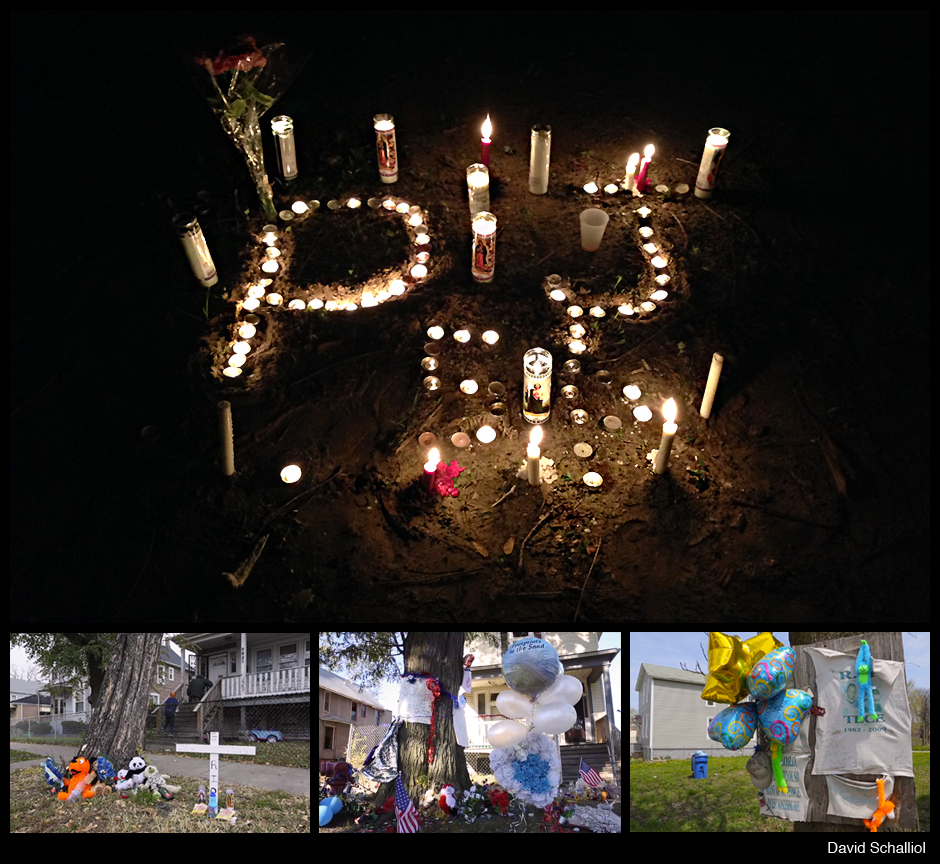 The memorial to PJ, the most recent death from residents, along with others in the two communities that compose “The Area”
The memorial to PJ, the most recent death from residents, along with others in the two communities that compose “The Area”
I want to accurately present these challenges, but I am mindful that the project will necessarily reinforce some of the negative characterizations of the neighborhood and the city. My sense is that ignoring those elements would be just as much part of the problem. The errors of this polar coverage are plainly seen in Detroit, where for several years, the main coverage of the city involved dereliction. A whole industry seems to have arisen to dwell on the problem. As small businesses continue to develop and outsiders discover the variety already in Detroit, however, a new threat has emerged: the presentation of the city as the great urban hope at the expense of a more complete picture of problems and successes. Perhaps the city is both, of course, but depictions of dereliction alongside selective redevelopment do not tell the whole story.
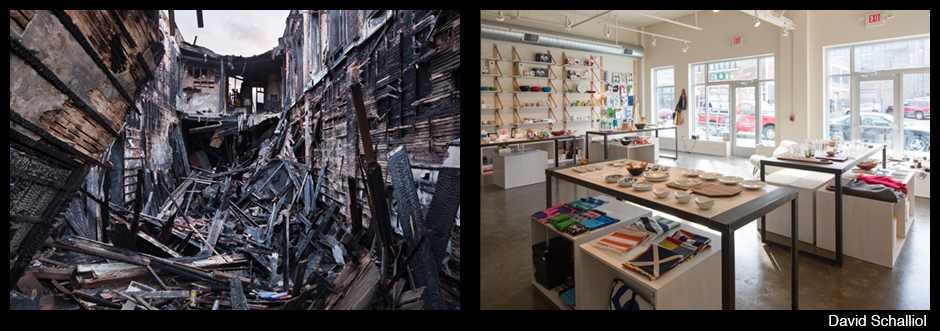
The interior of a derelict former mixed-use building on the city’s Southwest Side. A new boutique the week it opened in the city’s Midtown neighborhood. Seen in isolation, each obliterates Detroit’s actual story.
For those of us interested in visual representation, this poses a particular challenge. I imagine many photographers struggle to produce images that complicate rather than reinforce any particular point of view. Doing so has been one of my primary objectives over the last few years. In the neighborhood, my response has been similar to how I approached Detroit, showing all aspects of the situation, but also trying to produce images that stand in contradiction. Often this involves capturing dereliction and organization at the same time.
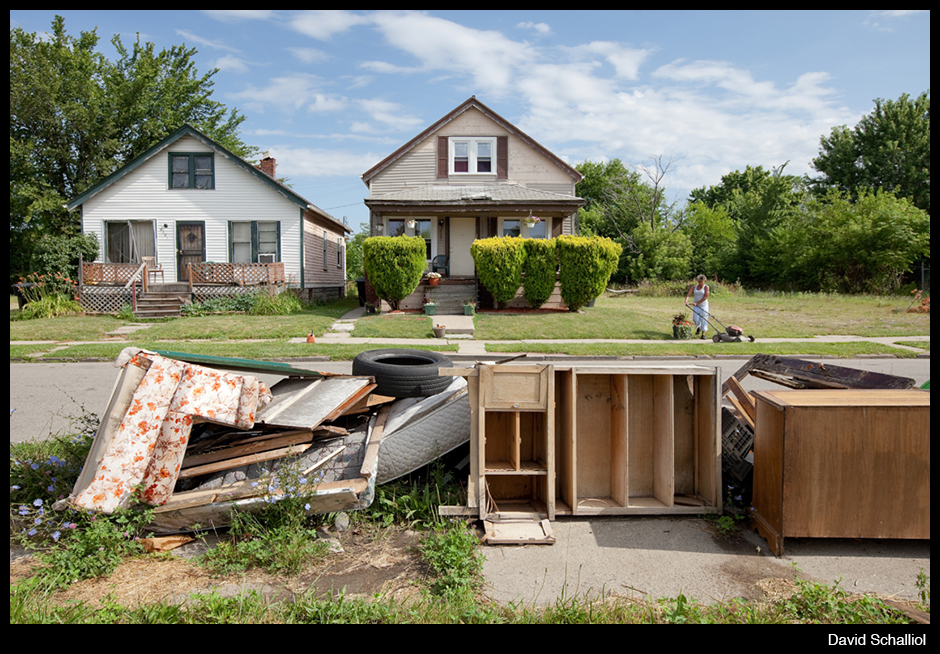
A Detroit resident mows her lawn after city workers collected debris dumped on the lot across the street.
Some of this change is already happening in Englewood. When the neighborhood is mentioned in the headlines, it is still more often for violence, but there are also rumblings of something different.
The relatively recent reconstruction of a community college and long-term community development projects are making the news, as is a group of supporters cheering new anti-pollution constraints negotiated with the freight yard operator. Among the projects that have received the most press over the last couple of years is a hybrid project (of which I am a minor participant) called See Potential. Organized by photographer Emily Schiffer and community organizer Orrin Williams, the project has grown beyond its mission by connecting with local groups seeking change in Englewood and other South Side communities.
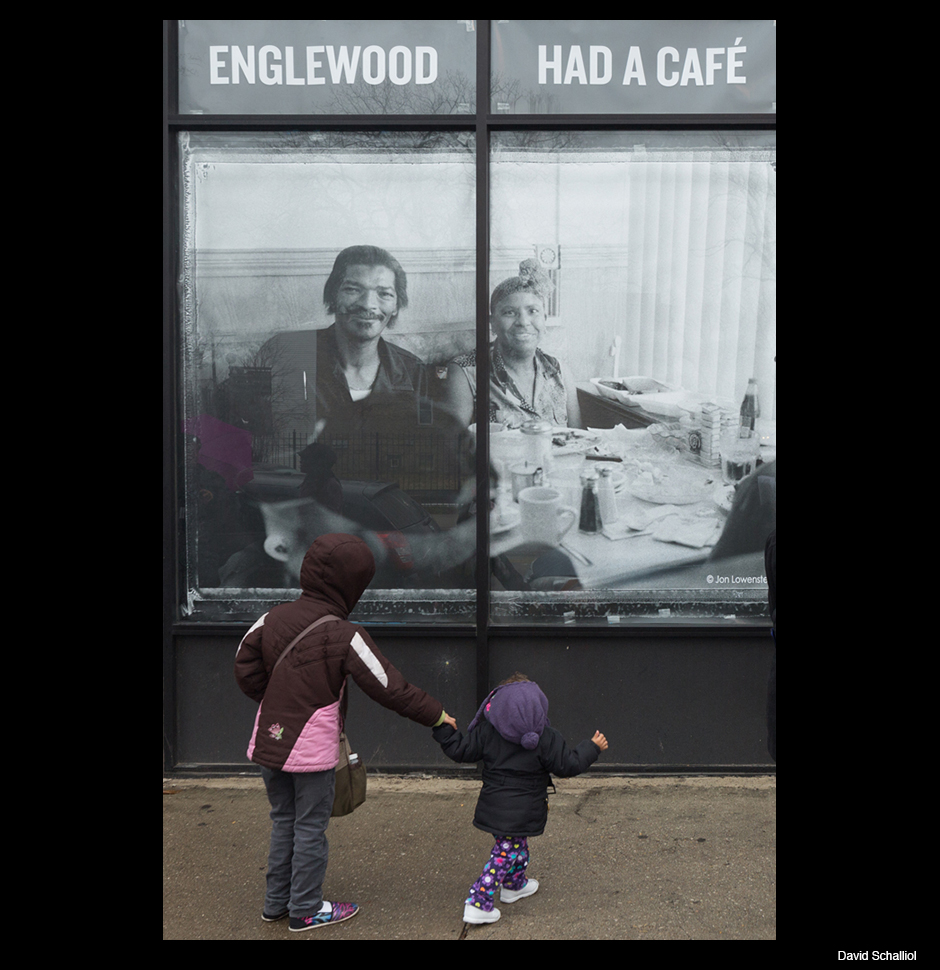
One window from See Potential that it is now the Kusanya Café
Perhaps more interestingly, community activists are now actively reframing the community. Rashanah Baldwin, a local journalist and activist, is now hosting a program at the community college radio station called “What’s Good in Englewood.” Others take curious outsiders on tours of community gardens, active churches and non-for-profit organizations. These campaigns may not receive the attention of “Say Nice Things About Detroit,” but there is now a concerted effort to demonstrate the complexity of the neighborhood.
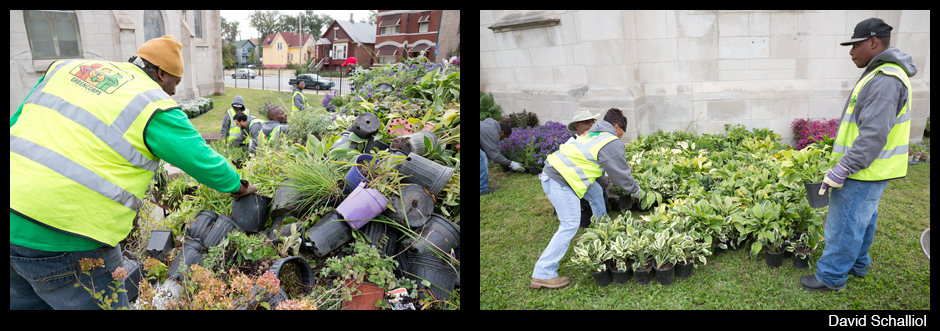
Chicago Embassy Church, a nearby church coordinated with Green Corps Chicago for a houseplant giveaway.
But not-for-profit organizations and community activists play a specific, sometimes-theatrical role in shaping communities. Because my project is to understand daily life, I have focused on balancing the ideal typical “good” and “bad” of any community through observing at routinized activities and small actions. Despite their importance in defining the daily experience of living in a community, these small projects receive little-to-no attention beyond the praise of immediate neighbors. From cleaning up glass knocked out of broken windows to burying troublesome fence posts, these seemingly trivial efforts provide an important window into the life of residents while operating from the position of problem and response.
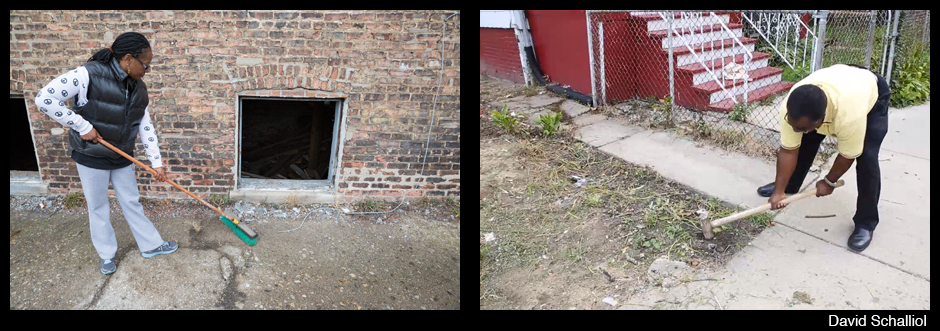
Residents address problems in the neighborhood.
Visually capturing and contextualizing these small actions doesn’t solve the problem of how to represent these complicated issues. It is, however, one strategy in producing a nuanced depiction of place.
In presenting the story, I continue to seek the right balance between the challenges that plague the community and the life that goes on in response to – or in spite of – them. After all, it is difficult to make sense of what we observe without falling back on our preconceived notions of any place, not to mention “deindustrialized” Detroit or the storied South Side of Chicago. That’s all the more difficult when our experience of it is mediated by someone else. For me, understanding this role of mediator means wrestling with how to produce complicated narratives that prompt investigation, rather than answers to be folded into an already constructed worldview.
Text and Photos by David Schalliol
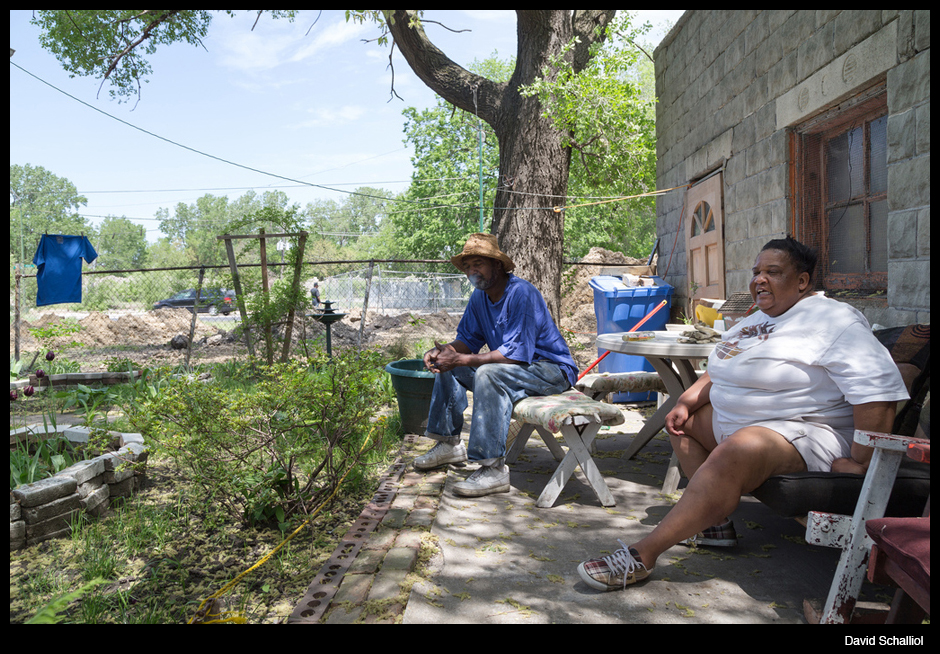
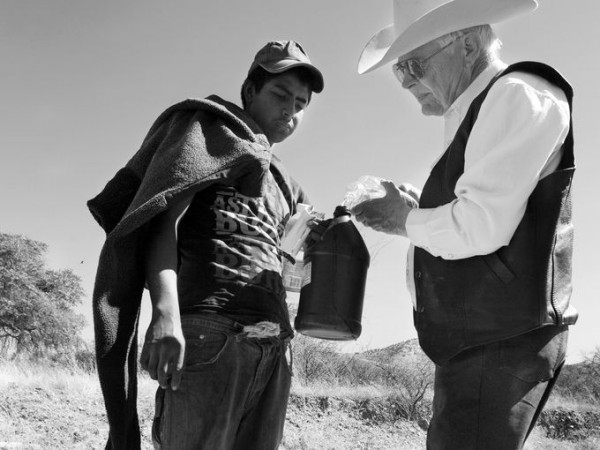

Reactions
Comments Powered by Disqus